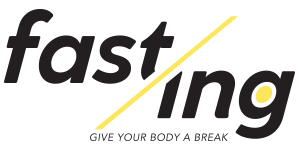This Ancient Breathing Practice will Help You Discover More Energy When Fasting

As most of you probably know, there’s a large emphasis on the breath and breathing in yoga. What some of you might not realize is that there are actually a number of breathing techniques, known as pranayamas, practiced for a variety of physical, mental, and emotional reasons.
Not only is the breath used to center the mind, but there are also specific breathing techniques to cool the body, massage the abdominal organs, soothe the nervous system, clear out mental cobwebs, balance the brain’s hemispheres, and more. (Not to mention their energetic effects on the subtle body.)
Breath of Fire is a unique and powerful pranayama that charges the entire nervous system, causing a physiological chain reaction affecting the whole body; and is a helpful tool for burning off excessive nervousness, relieving stress, and combatting depression. Let’s take a closer look
A rapid, rhythmic and continuous breath
A foundational breathing technique in Kundalini Yoga, Breath of Fire is a continuous breath powered by rapid stomach pumps rhythmically pumping air in and out through the nose.
On the exhale, air is forcefully pushed out by sharply pulling the navel center and upper abdomen back toward the spine, contracting the diaphragm upward. Air is then immediately pulled back in on the inhalation as the abdomen relaxes, releasing the diaphragm back down.
The rapid movement of breath quickly oxygenates the blood, increases circulation, and heats up the body, purifying the bloodstream and eliminating toxins from the lungs, mucous lining, and blood vessels. Not only cleansing but also strengthening the lungs.
The rhythmic pumping of the navel center and solar plexus stimulates the nervous system – quickly clearing the mind and energizing the whole body. Done consistently, Breath of Fire strengthens the nervous system to resist stress, helping increase emotional resiliency.
What’s more, the dynamic breathing technique fires up the flow of energy through the entire subtle body, having profound healing and transformational effects.
Prana and our energetic subtle body
According to ancient yogic texts, there are 72,000 energy channels, called nadis, throughout the subtle body that (we now know) parallel the nervous system. Life-force energy, known as prana, runs through the nadis, regulating all living functions of the body as well as our psychological state and wellbeing.
When prana flows freely through the energy channels all is healthy and well; when it doesn’t, neither the physical body nor mind can function optimally, causing disease (including emotional dis-ease).
Along the main energy channel in the center of the body are seven focal points of energy, called chakras, that correspond to the various nerve bundles located along the spine. Generally thought of as spinning wheels of energy, chakras radiate life-force energy through their region of the body via hundreds of nadis, governing the activity of their associated organs and glands. However, they often become blocked, restricting the circulation of prana and, thus, creating various physical, mental, and/or emotional imbalances.
Much of Kundalini Yoga is aimed at and increasing physical vitality by accessing and integrating life-force energy throughout the body. Breath of Fire is an extremely effective way to cleanse the energy channels and move through the chakras, helping maintain physiological and psychological balance. Here’s why.
Center of vitality, power and transformation
The third chakra, located in the center of the abdomen, is said to be the point where all 72,000 energy channels (and thus their thousands of corresponding nerves) meet. It is the pranic hub of the subtle body. Like the sun at the center of our solar system, the third chakra is the center of our body’s pranic system, helping sustain all living functions.
Activating the third chakra – which the Breath of Fire is designed to do – stimulates the flow of energy through the entire subtle body.
Considered the center of our vitality, the third chakra (also known as the solar plexus or navel chakra) is the source of our personal power, will, and confidence. Perhaps it isn’t surprising then that the third chakra is associated with fire – the element of change and transformation. The energy of the navel chakra regulates our sense of self, empowering us to make purposeful choices and take affirmative action in our lives.
Physically, the third chakra governs the digestive system. It is the seat of our digestive fire (angi), directly influencing our ability to not only to digest foods but thoughts, emotions, and experiences as well.
Breath of Fire stokes our inner fire, strengthening and balancing the digestive system while harnessing the inherent power of the third chakra to help us make personal changes, achieve our goals, and transform our lives.
Safely perform Breath of Fire
Seated with an elongated spine, start by taking a deep inhalation, allowing the belly and ribs to softly expand. Then sharply exhale, forcing all of the air out by pulling the naval in toward the spine. As soon as all of the air is pushed out immediately relax your abdomen pulling the air back in as you inhale. Then snap the belly back toward the spine, forcefully exhaling.
Get into a rhythm, continuously inhaling and exhaling at the same pace and equal lengths. Start slow, placing one hand over your navel to feel the contraction of your abdomen on your exhales and relaxation on your inhales, and for 30 seconds at a time. Quicken your breathing as you become more comfortable. Eventually, Breath of Fire is meant to be done rapidly with approximately 2-3 breath cycles per second for a duration of 1-3 minutes.
Most importantly, try to stay relaxed. You should not experience tension in your shoulders, chest, or abdomen, just the rhythmic pulling, and pumping of air. It is common to experience some tingling sensations throughout the body, however, if you become dizzy or light-headed (or start cramping) – slow down, and, if need be stop and take a few deeper breaths.
Editor’s Note:

Meagan McCrary
Meagan McCrary is an experienced yoga teacher, freelance writer, and author of “Pick Your Yoga Practice: Exploring and Understanding Different Styles of Yoga”. Her writings, covering a variety of health, fitness, and lifestyle topics, have appeared in Yoga Journal, 24Life Magazine, Mind Body Green, Sweat Equity Magazine, The Chalkboard, and YogaUOnline (among others). Meagan’s passion is helping people find more ease, comfort, and functionality in their bodies through a variety of modalities; and currently works with a diversity of clients in Southern California, specializing in chronic pain relief, soft-tissue release, postural awareness, pelvic strength, and stability, and prenatal yoga and fitness.





